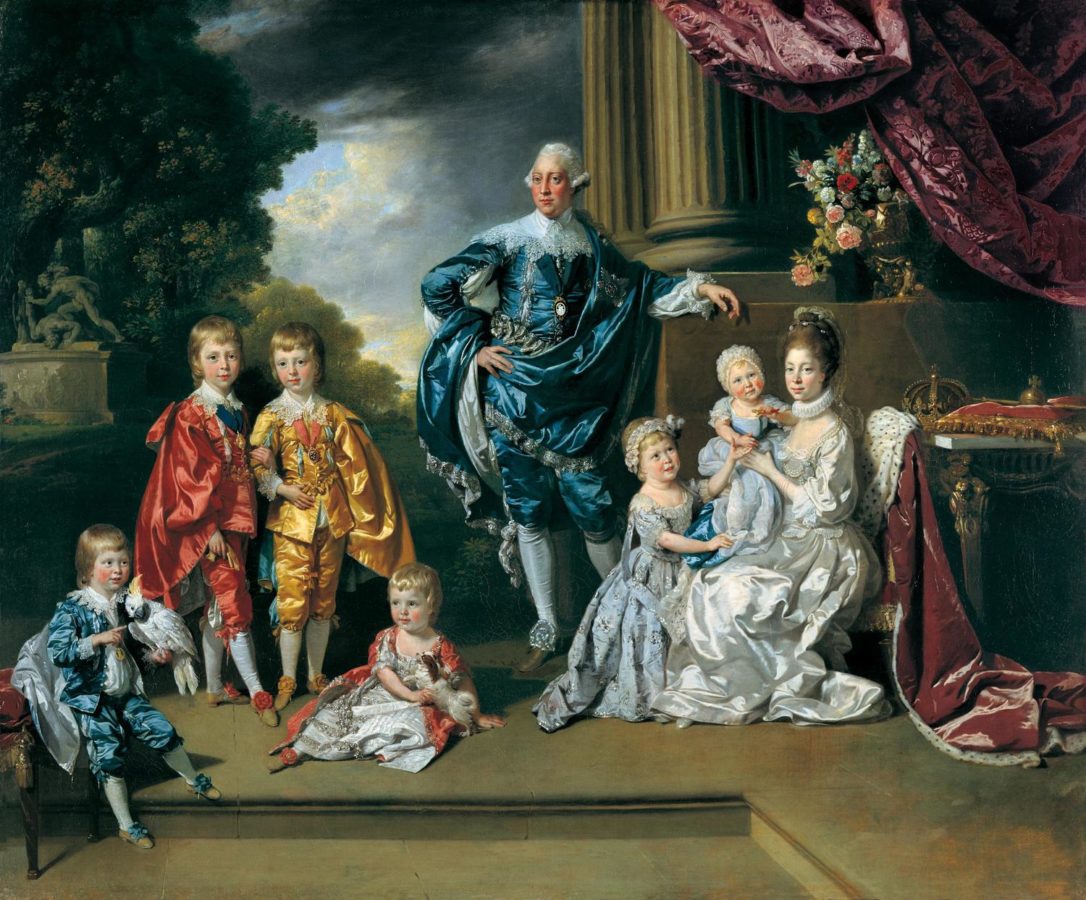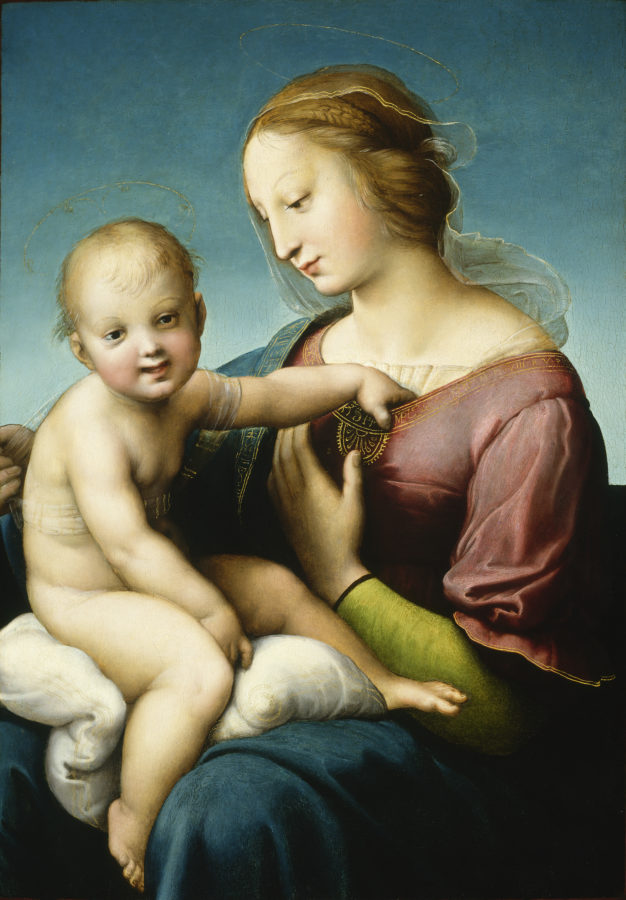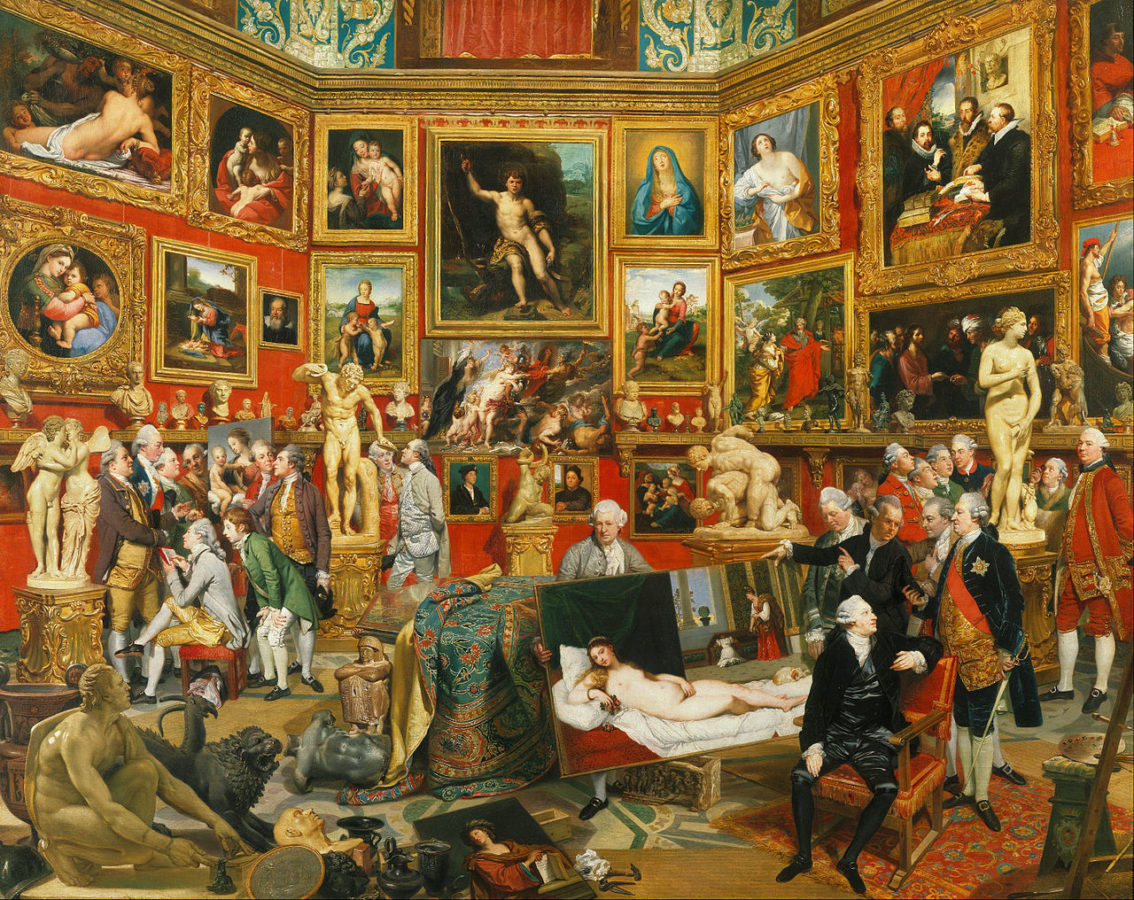Masterpiece Story: Portrait of Madeleine by Marie-Guillemine Benoist
What is the message behind Marie-Guillemine Benoist’s Portrait of Madeleine? The history and tradition behind this 1800 painting might explain...
Jimena Escoto 16 February 2025
26 September 2023 min Read
Johan Zoffany (1733-1810) was a German-born neoclassical painter. In the autumn of 1760, he moved to England and started to work for a clockmaker, Stephen Rimbault, painting vignettes for his clocks. Luckily, he was noticed by the royal family and enjoyed the patronage of King George III and Queen Charlotte starting in 1764. Among others, he created their family portrait titled George III, Queen Charlotte, and their Six Eldest Children (1770). But today, we won’t talk about royal portraits. We want to tell you the story behind the most famous masterpiece The Tribuna of the Uffizi by Johan Zoffany.

The painter Johan Zoffany was an adventurous man. He wanted to see the world and leave England with James Cook’s expedition on the ship Resolution. It was the famous traveler’s second exploration cruise and this time the Southern Sea was the main goal. The painters were to sketch discoveries and daily life of the whole expedition. Unfortunately, the organizers decided not to take some people with them, including artists, because there was not enough space on the ship to take the right amount of supplies for everybody. Zoffany was incredibly disappointed; he had already awakened the desire to travel and didn’t want to give up this idea. Therefore he decided to go to Italy, where he studied painting in his youth.
He also had a different reason to go: his patroness, Queen Charlotte, who had never been abroad, asked him to paint the famous treasury of masterpieces of the great arts that was The Tribuna room in the Uffizi Gallery. These kinds of places were very attractive to many artists and students; they were also often the main goal of traveling aristocracy. The Tribuna room was one of the “must-see” points on the European culture map. So, it wasn’t uncommon that the Queen wanted to see it so much, and she was able to thanks to Zoffany.
Here we have to mention that Johan, like a lot of artists, loved women and had many affairs, despite being married. Because of that, Mrs. Zoffany one day decided she’d had enough of her husband’s flings and returned to her homeland, leaving him alone in England. One of the artist’s mistresses was a 14-year-old girl, thrown out of her family home for being pregnant with the married painter. According to rumors, she hid in desperation on the ship Zoffany was traveling to Italy on. After arriving in Florence, the artist divorced his first wife and remarried the young mother of his child, and from then on, they lived together and raised a son.
After stabilizing his life situation in a new city, the artist finally started to create his masterpiece. He spent a lot of hours painting the northeast section of the Tribuna room. On the painting, he included many artworks from the room itself and other pieces from elsewhere in the Medici collection; for example, Raphael’s Madonna della Sedia or The Niccolini-Cowper Madonna.

In Zoffany’s Tribune of the Uffizi, we can notice a lot of masterpieces, including Venus of Urbino by Titian (in the center as the collection’s pride), Venus with a Satyr and Cupids by Annibale Carracci (left wall), Madonna and Child by Correggio (left wall), Pope Leo X with Cardinals Giulio de’ Medici and Luigi de’ Rossi by Raphael (right wall), The Four Philosophers by Rubens (right wall), and many Ancient Roman statues and busts.
I wonder how many artworks can you recognize?

The painting was well received in England. The members of the Royal Art Academy were delighted and even wanted to reward Johan Zoffany with a lifetime annual scholarship ranging from 700 to 1000 pounds. Unfortunately, King George III was opposed to this proposal, claiming that the painter extended his stay in Italy at the cost of the English crown. According to the king, Zoffany wasted a lot of time painting portraits of the Austrian emperor and his family while he should have concentrated on creating The Tribuna of the Uffizi. The artist didn’t agree with this accusation, explaining that he even refused to move to Vienna at the invitation of King George II and to receive a Baron’s title, because he was always faithful to the English crown. We don’t know what happened later or how much Johan was paid in the end. However, ten years after hanging the masterpiece in the Kew House, the famous madness of George III was becoming more and more intense. Once, the king tried to destroy the artwork in a rage, so it was removed from the royal residence for its protection. Many years have passed since then, and now we can admire this great masterpiece in the Royal Collection in Windsor Castle.
Unfortunately, there is also a personal tragedy of Zoffany behind this story. During his work on The Tribuna of the Uffizi, he lost his little son; the child fell down the stairs and three weeks later died of brain damage. It completely broke the painter emotionally. He couldn’t accept what happened and became constantly depressed. Of course, it had a bad influence on his work and, after returning to England, he wasn’t the same artist – he was no longer creative, productive, and full of life. Something had changed in him. Johan Zoffany suffered from this tragedy till his death in 1810 at the age of 77.
DailyArt Magazine needs your support. Every contribution, however big or small, is very valuable for our future. Thanks to it, we will be able to sustain and grow the Magazine. Thank you for your help!